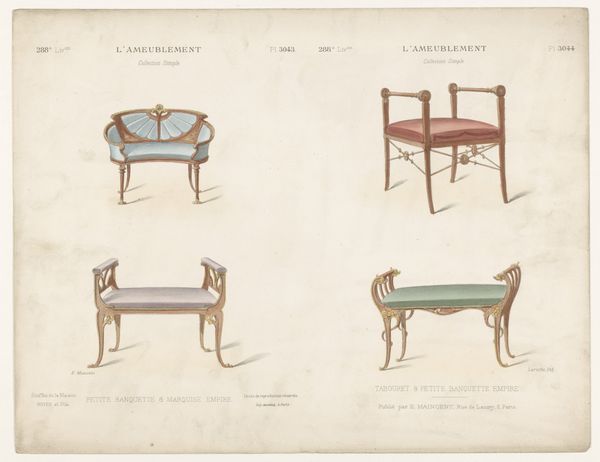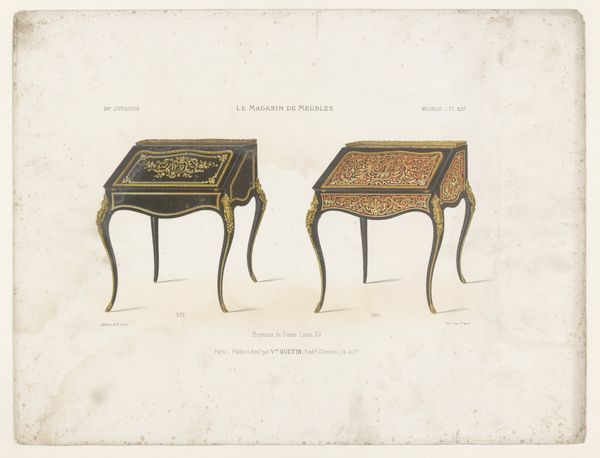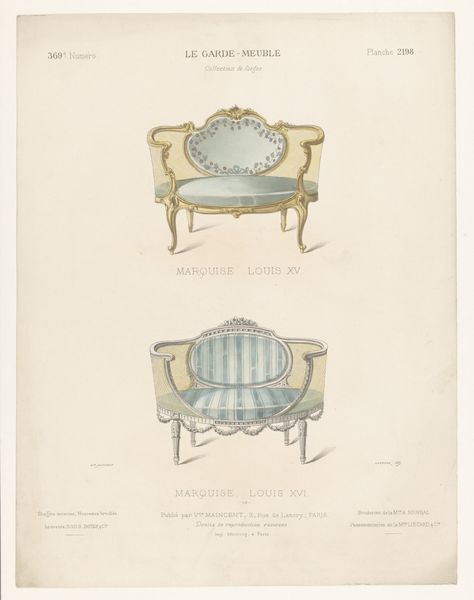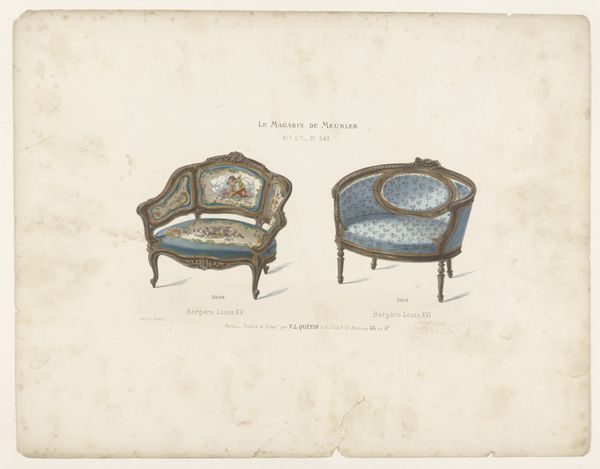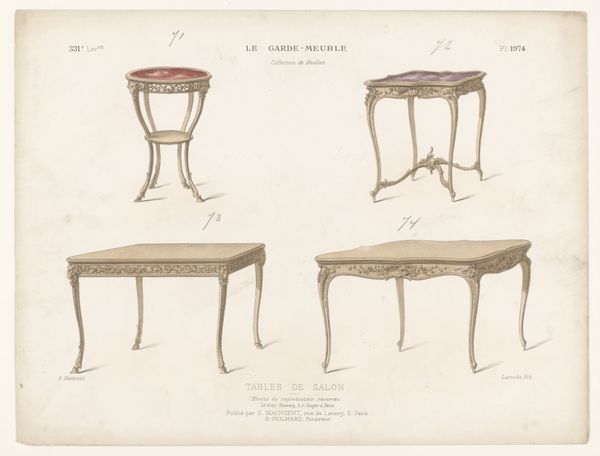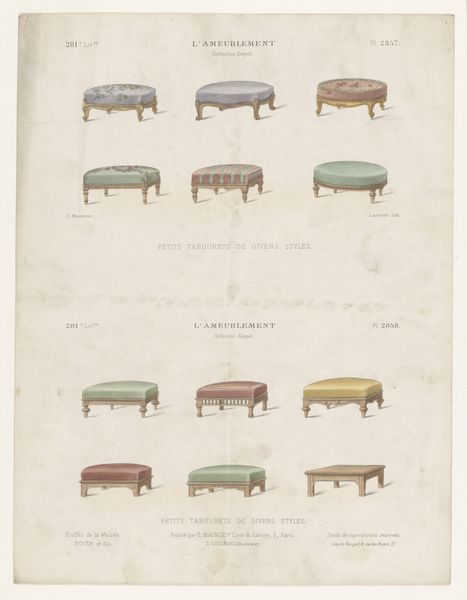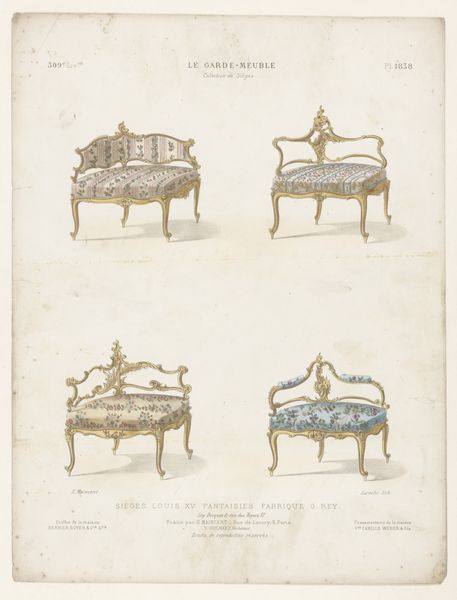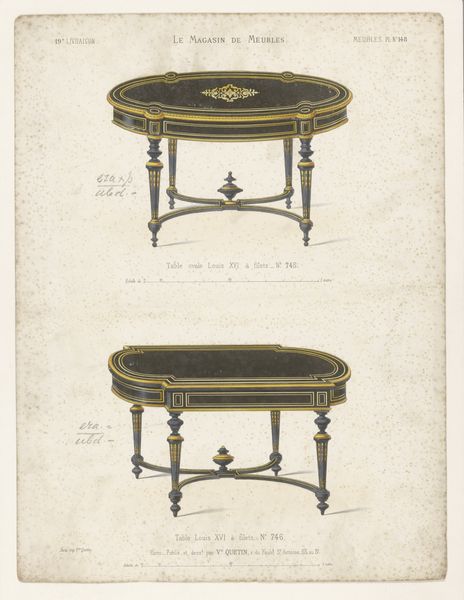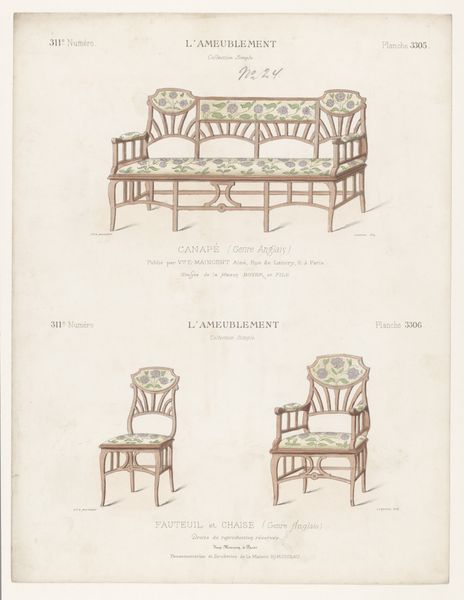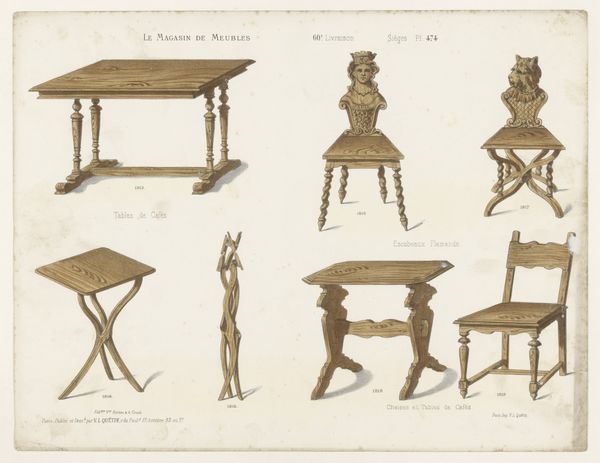
lithograph, print, watercolor
#
lithograph
# print
#
watercolor
#
watercolour illustration
#
genre-painting
#
decorative-art
#
watercolor
Dimensions: height 273 mm, width 357 mm
Copyright: Rijks Museum: Open Domain
Curator: Welcome! Today, we are exploring a lithograph, enhanced with watercolor, entitled "Zes poefen en tabourets," which translates to "Six Poufs and Stools." Its creation dates somewhere between 1832 and 1877, attributed to an anonymous artist. Editor: The image evokes a sense of gentle luxury, or perhaps "aspirational comfort" might be a better phrase? The almost clinical arrangement of the furniture studies here keeps the warmth at bay. It feels as if one is glancing through pages in an inventory of styles... Curator: Yes, "inventory" captures something essential. Each stool, each poof, feels carefully chosen to reflect prevailing aesthetic values. I'm drawn to the symbolism inherent in the repeating forms. They’re almost like miniature thrones, suggesting something about domestic power structures, even on this small scale. Notice the bamboo-like legs. They remind me of formalized exoticism. Editor: Exoticism carefully managed for Parisian consumption, I would argue! For me, what stands out most are the upholstery choices. How were these fabrics produced, and at what cost to the laborers, both human and animal? This print isn’t just a decorative record; it speaks to industrial capacity. Curator: A telling point. The print medium itself, with the addition of watercolor, seems calculated to appeal to a particular segment of the population interested in decorative arts and high fashion... Editor: Exactly. The lithographic process allowed for relatively cheap replication, bringing these desirable forms to a wider audience, albeit still one of means. Curator: Yet, it also brings us back to your point about labor and materials. The ability to produce these images, and then the furniture itself, points towards larger social forces at play in this period. I am really wondering what stories could be hiding within these patterned textile choices. Editor: The choice of the watercolor as well seems perfect in capturing how this design sits within the larger currents of industry. These are objects made desirable and brought within closer reach through careful artistic labor. It all speaks volumes about production, style and class aspirations during this time. Curator: Well, that adds some really interesting angles for consideration! Editor: Indeed. Always rewarding to dive a little deeper and challenge our assumptions of everyday design!
Comments
No comments
Be the first to comment and join the conversation on the ultimate creative platform.
